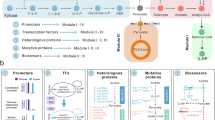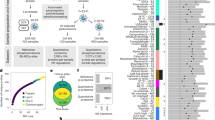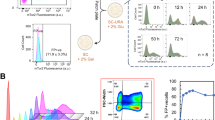Abstract
It has been shown that when yeast is fractionated by repeated extractions with cold trichloracetic acid a species of phosphate, found in both the acid-soluble and the residue fractions, is identifiable as metaphosphate1,2. The co-existence in a yeast cell of metaphosphate in both acid-soluble and acid-insoluble forms suggests the possibility that these two may differ in their metabolic and physiological function. It is the purpose of the present note to report some recent observations which indicate that this is the case.
This is a preview of subscription content, access via your institution
Access options
Subscribe to this journal
Receive 51 print issues and online access
$199.00 per year
only $3.90 per issue
Buy this article
- Purchase on SpringerLink
- Instant access to full article PDF
Prices may be subject to local taxes which are calculated during checkout
Similar content being viewed by others
References
Wiame, J. M., J. Biol. Chem., in the press.
Wiame, J. M., Bull. Soc. Chem. Biol., 28, 552 (1946).
Schmidt, G., and Thannhauser, S. J., J. Biol. Chem., 161, 83 (1945).
MacFarlane, M. G., Biochem. J., 30, 1369 (1936).
Author information
Authors and Affiliations
Rights and permissions
About this article
Cite this article
JUNI, E., KAMEN, M., SPIEGELMAN, S. et al. Physiological Heterogeneity of Metaphosphate in Yeast. Nature 160, 717–718 (1947). https://doi.org/10.1038/160717b0
Issue date:
DOI: https://doi.org/10.1038/160717b0



